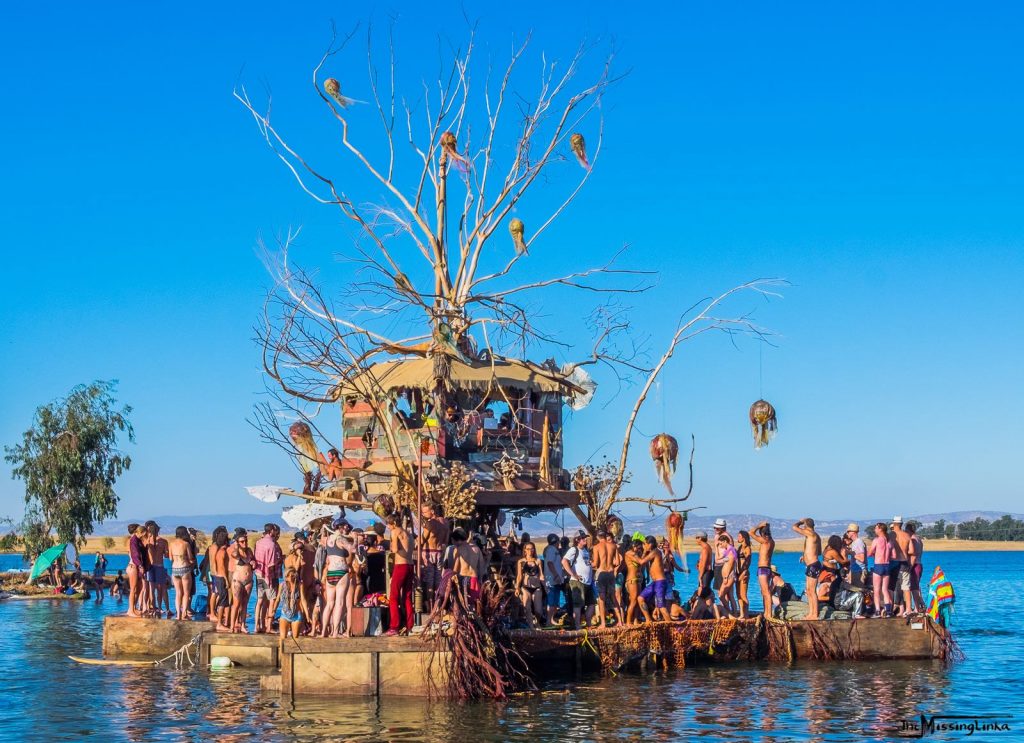
A few things we had to get right on this projects. Whatever we made we all agreed that it had to float the duration of the event! In the past, we have been to events where we have seen floating installations fail and sink. We agreed nothing would be more embarrassing for us if we had to shut down our installation due to it not being seaworthy.
Our first weight estimates of the craft were around 80,000 lbs.
First the science behind flotation. Archimedes principle the law of buoyancy.
In short for every cubic foot of water you displace you get 62.4 lbs of buoyancy. Minus the weight of whatever you displace the water with. One cubic foot block of foam provides 62.4 lbs of flotation minus the weight of the foam block.
1 cubic foot of displacement = 62.4 lbs of buoyancy
When people asked how does buoyancy work I sent them to this fun TED talk video. It is a quick cartoon way to explain flotation.
With some research on existing commercial methods of floating, I brought three possible options to the table for our flotation design.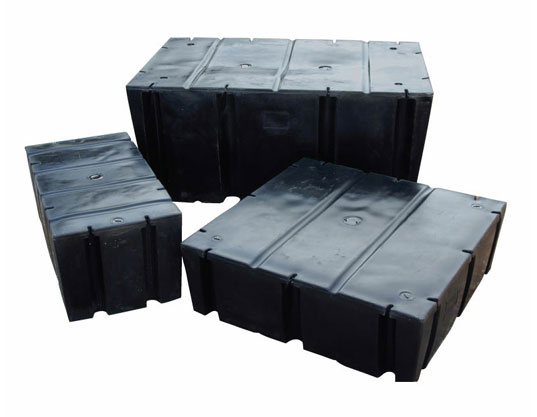
Plastic encapsulated EPS foam. This was the ideal solution. What we liked about it was that it would be environmentally friendly and durable. With our fear of the eps foam breaking up in the water. The problem is they are expensive, If this were a more permanent structure, I would advise going with this. It was almost twice the cost of the solution we decided to go with, and we did not have the budget.

55-gallon plastic barrels was the first floating solution we looked at. Besides we have all seen these used many times on projects you can find them all on the web. The problem with this is that we have also seen them fail just as often. The barrels are made of plastics like polyethylene, This is so they are safe to store food and water. This also makes it difficult to create a watertight seal because most adhesives won’t stick to it. Even if we were successful in creating a fail-proof seal for the lid. Their round shape and overall design made them unruly to work with and not the optimal shape for displacement of water. We also observed that once one fails and starts to take on
Our first estimates with this solution said we needed a lot of barrels to stay afloat. We had to guarantee fail-proof seals for 160 barrels. We observed that once one barrel fails and starts to take on water you get a chain reaction of failures. The idea did come up to fill the barrel with expanding foam and use the barrel as a mold, but the cost and the work involved to do that wasn’t reasonable.
55 – gallon plastic barrel
1-gallon water = 8.34 lbs
55-gallon barrels = 458 lbs of buoyancy

We finally landed on naked EPS foam blocks. These are mostly used for temporary construction projects on waterways around the world. It was the perfect solution for our temporary art installation, the manufacturer cut to order at any size we wanted. As long as we prevented the user from touching them, they are durable enough to keep us afloat for the 5-day event.
Below are quick notes of the weight estimates on our layout design. You can download the full notes in PDF below. Feel free to contact me if you have any questions.

Download notes PDF – drift-float-2015
Conclusion, in the end, We did achieve our goals of creating a craft that floated for the required amount of time. We found that the flotation was the easy the part. The part that was difficult is constructing a deck that could support the weight of the craft above and withstands the directional forces that you experience on the water.
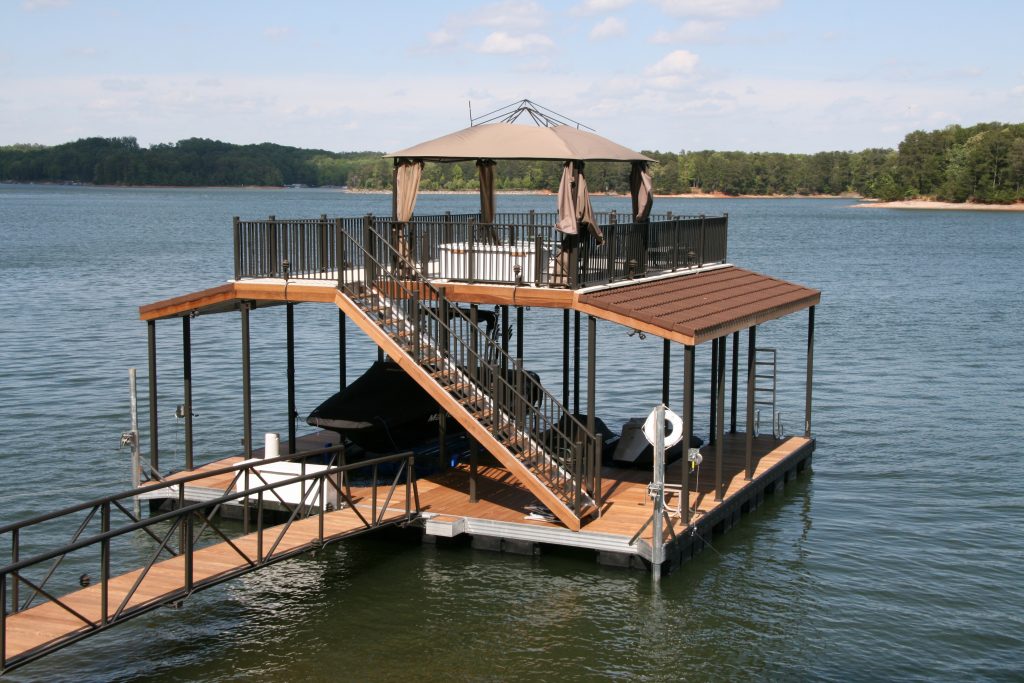

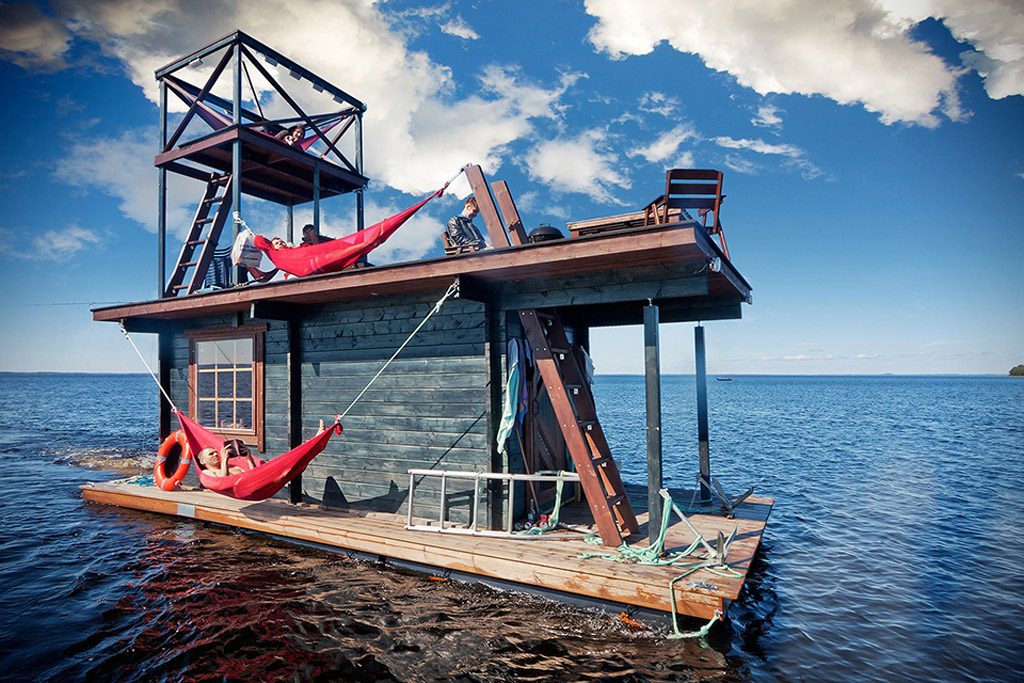
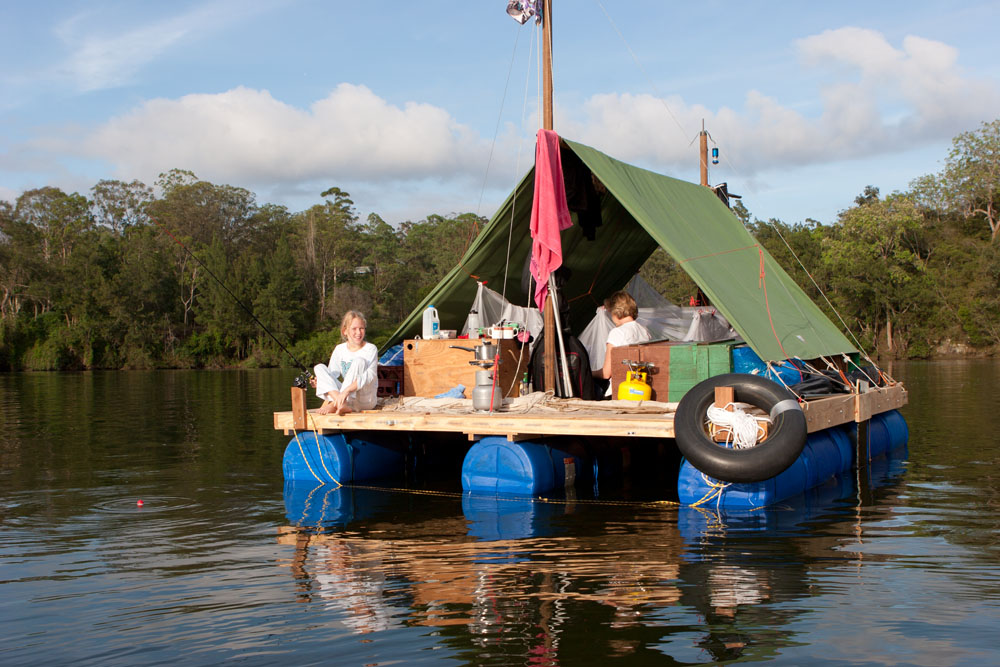
Pingback: Floating Art Installation – The Atoll – Eddie Carbin
Hi Eddie, I see you’re doing interesting and fun things. 😉
🙂 thanks! I hope you are doing well!